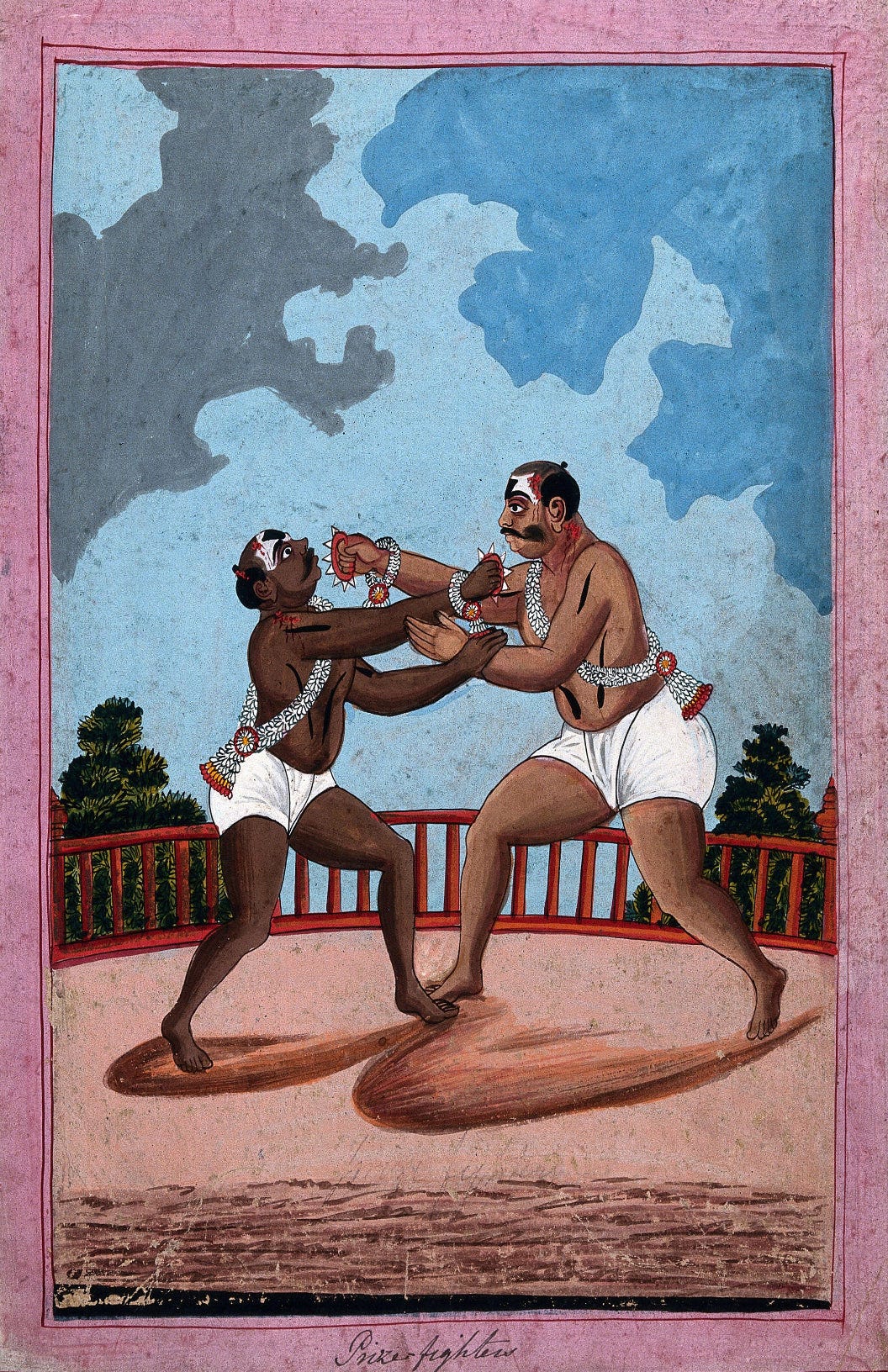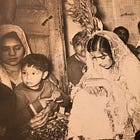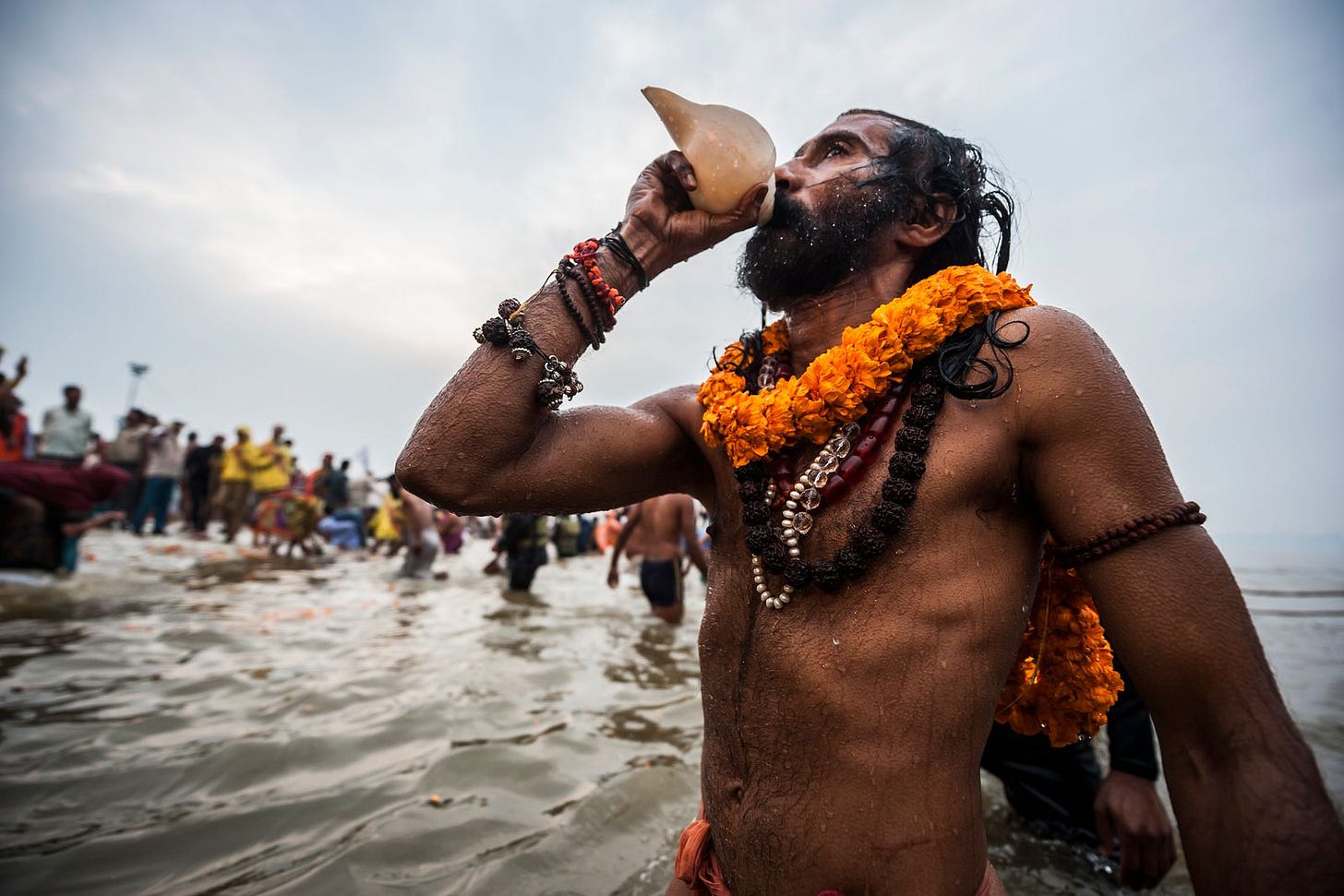Welcome to the Brown History Newsletter. If you’re enjoying this labor of love, please do consider becoming a paid subscriber. Your contribution would help pay the writers and illustrators and support this weekly publication. If you like to submit a writing piece, please send me a pitch by email at brownhistory1947@gmail.com.
Don’t forget to check out our SHOP and our Podcast.

Recommended Reads/Listens:
Maha Kumbh Mela Concludes: A Timeless Tradition, Not a Passing Trend
From the comforts of home, my family watches as the news anchor announces that an estimated 600 million people are expected to visit the small city of Prayagraj for the Maha Kumbh Mela in a span of forty-five days, from January 13 to February 26, 2025.
Phone calls start coming in—relatives and friends asking if there’s still time to book tickets, eager to join the religious procession that seems to be seeping into every corner of our lives.
I can’t help but wonder if they’ve forgotten all those Bollywood scenes of children and parents separated in the chaos of the fair—once a cinematic trope, now more of a nostalgic stereotype in the digital age. Still, the sheer scale of it is staggering—a gathering larger than the population of most countries.
We know the routes, where we can stay, and all the countless food options. One can join for free or spend liberally on the experience. Guides are available for everything, and with AI and Google at the helm, the journey has never been smoother.
The spiritual event has slowly turned into the largest spectacle India has seen for years, an event that cannot be missed, and a trend to be followed closely. While the general population may not know the reason behind the event, they are enamoured by the glossy exterior being presented in the media.
For the younger generation, the internet is flooded with pictures of global celebrities including Laurene Powell Jobs, Chris Martin, Richard Gere, and Dakota Johnson. At the same time, numerous Indian celebrities like actor Hema Malini, singer Guru Randhawa, business tycoons Adani and Ambani, and comedian Sunil Grover have also been spotted at the holy site.
Popular Youtubers, and social media content creators have used the event as material for more content, chasing the trend to gain popularity.
However, it is the elusive babas who dominate the front pages of newspapers. The most fascinating ones include ‘Kabootar wale baba’ with a pigeon on his head, ‘Geetananda Giri’ wearing two lakh rudrakshas, ‘Anaaj wale baba’ growing wheat and millet on his head, and ‘Radhe Puri baba’ who has had one hand raised for 14 years.
All of the information about the event has taken over the internet and the media channels. It has become a regular part of the daily conversation amongst people. From a sacred event, it has turned into a check list item. People are scrambling to attend the event because they do not want to miss out on the popular thing right now.
Yet, it must be understood that the Kumbh Mela is not merely a passing trend. It is not the Indian equivalent of Burning Man, but a centuries-old tradition deeply woven into the fabric of Indian culture. Still, not everyone is fully aware of its mythology, history, cultural significance, or the immense financial impact it has on the country.







